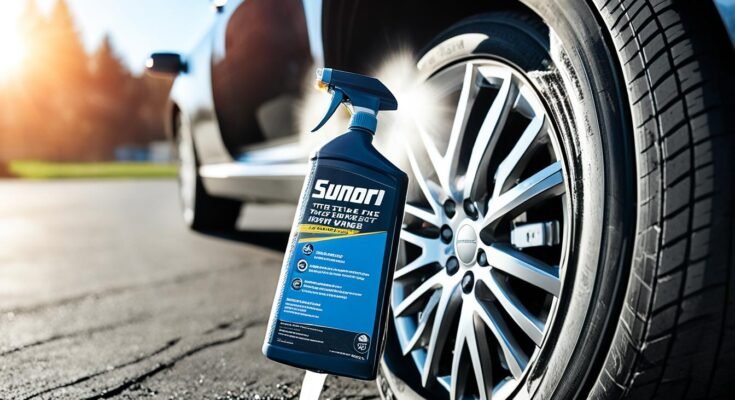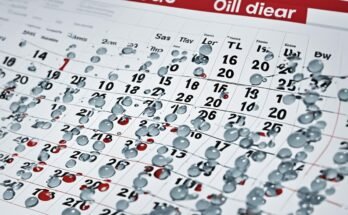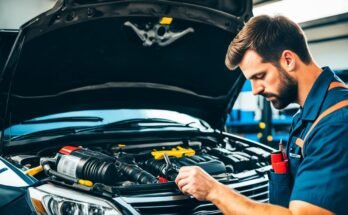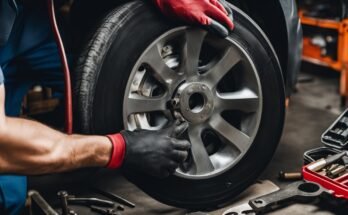Tires are very important and we need to look after them well. By taking care of our tires, we can drive safer, perform better, and save money. There are a few easy tips that can make our tires last longer and make our driving better.
Looking after your tires is simpler than it seems. Regular checks, keeping the right tire pressure, and moving them around on time are key steps. They help tires wear evenly, save gas, and make driving safer. A little care goes a long way to keeping our cars in top shape for a long time.
This guide will help you maintain your tires effectively. From simple checks to more detailed care, you’ll learn all about tire safety and how to make them last. Let’s start learning how to make your tires work their best.
Understanding the Importance of Tire Maintenance
Tire care is essential for your safety, how well your vehicle drives, and saving money. We will see why taking good care of your tires can help you in many ways.
Safety Benefits of Well-Maintained Tires
Tire safety is very important for vehicle upkeep. Good tires mean better grip and control, lowering the chance of crashes. Sadly, the National Highway Traffic Safety Administration says only 19% of drivers have the right tire pressure. This shows a big safety issue.
Impact on Vehicle Performance and Fuel Efficiency
Caring for your tires well makes your car perform better and use less gas. Keeping your tire pressure correct helps with handling and saves on fuel. Tires that are not pumped up enough waste gas and wear out strangely. Tires that are too full don’t grip as well and might burst more easily.
Cost Savings Through Proper Tire Care
Taking good care of your tires can save a lot of money. By looking after them regularly, you can use them longer and avoid buying new ones too soon. Let’s see what we should do:
| Maintenance Task | Frequency | Benefits |
|---|---|---|
| Tire Pressure Check | Monthly | Improved safety, fuel efficiency |
| Tire Rotation | Every 5,000-8,000 miles | Even wear, extended tire life |
| Tread Depth Check | Every 3,000 miles | Ensures safe driving conditions |
| Wheel Alignment | As needed | Reduces tire wear, improves mileage |
By doing these simple things, you can make your tires last longer, drive more safely, and make your car work better. And you’ll save money in the long run.
Essential Tire Care Tips for Optimal Performance
Keeping your tires in good shape is vital for safety and how well your car works. We’ve put together a list of important tips for tire care to make sure your tires stay in great condition.
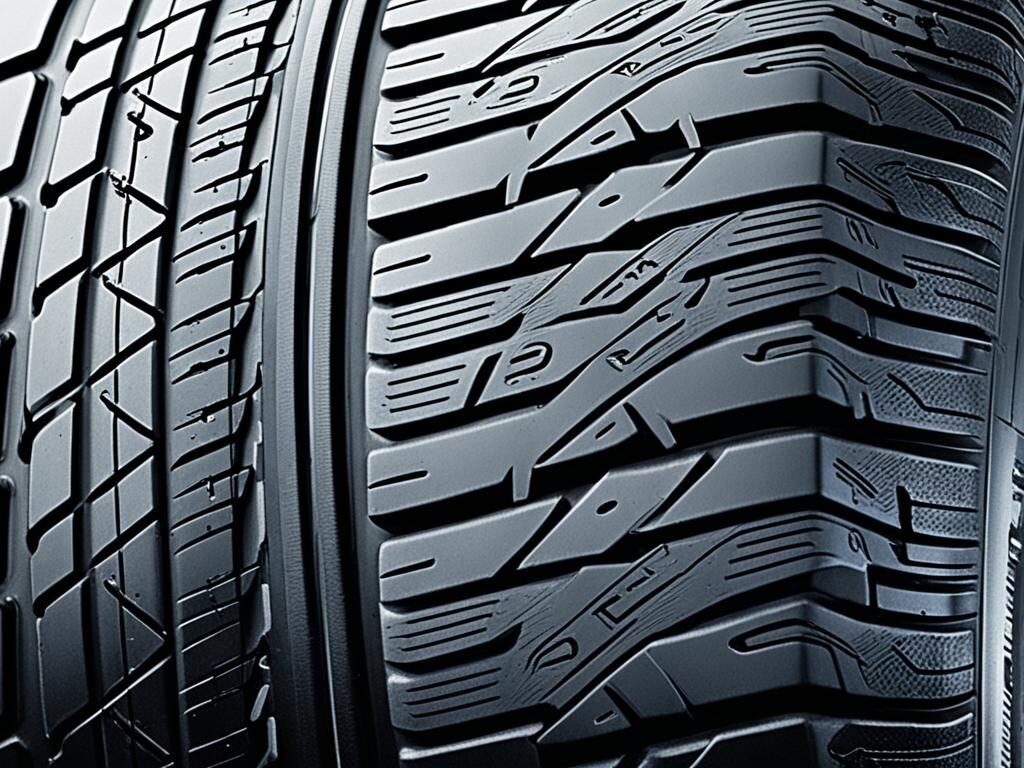
It’s important to regularly look at your tires. Once a month, check them for signs of wear, like bulges, cuts, or things stuck in them. This could stop tire problems early and make them last longer.
Keeping the right tire pressure matters a lot. Tires that don’t have enough air can make you use more gas and wear out faster. Shockingly, about 23% of cars have a tire with way too little air.
On the other hand, having tires with too much air is bad too. It can cause them to wear out quickly and make your car harder to control. About 17% of cars have this problem. So it’s smart to always check your tire’s air pressure.
Rotating your tires helps make sure they all wear down evenly. We suggest doing this every 5,000 to 8,000 miles. Doing so spreads out the wear, meaning your tires will last longer and your car will perform better.
Remember, balancing your tires is key for a smooth ride. It stops your car from shaking. Make sure your tires are balanced when they are rotated or if you put new ones on.
| Tire Maintenance Task | Recommended Frequency | Benefits |
|---|---|---|
| Tire Pressure Check | Monthly | Improved fuel efficiency, even wear |
| Tire Rotation | Every 5,000-8,000 miles | Even wear, extended tire life |
| Tire Balancing | With rotation or replacement | Smoother ride, reduced vibrations |
| Visual Inspection | Monthly | Early problem detection, safety |
Following these tips will make your tires work better, your car safer, and possibly save you from paying for new tires too early. Remember, taking care of your tires is like investing in the health of your car and yourself on the road.
Regular Tire Pressure Checks and Adjustments
Keeping the right tire pressure is key for both safety and how well your vehicle runs. It’s super important to check your tires often. Now, let’s talk about the basics of keeping your tire pressure in check.
Finding the Correct Tire Pressure for Your Vehicle
It’s pretty easy to find the right tire pressure. Just look in your car’s manual or on the sticker inside the driver’s door. You’ll see the recommended PSI there. It’s good to know that the tire pressure you need might be different depending on what car you have.
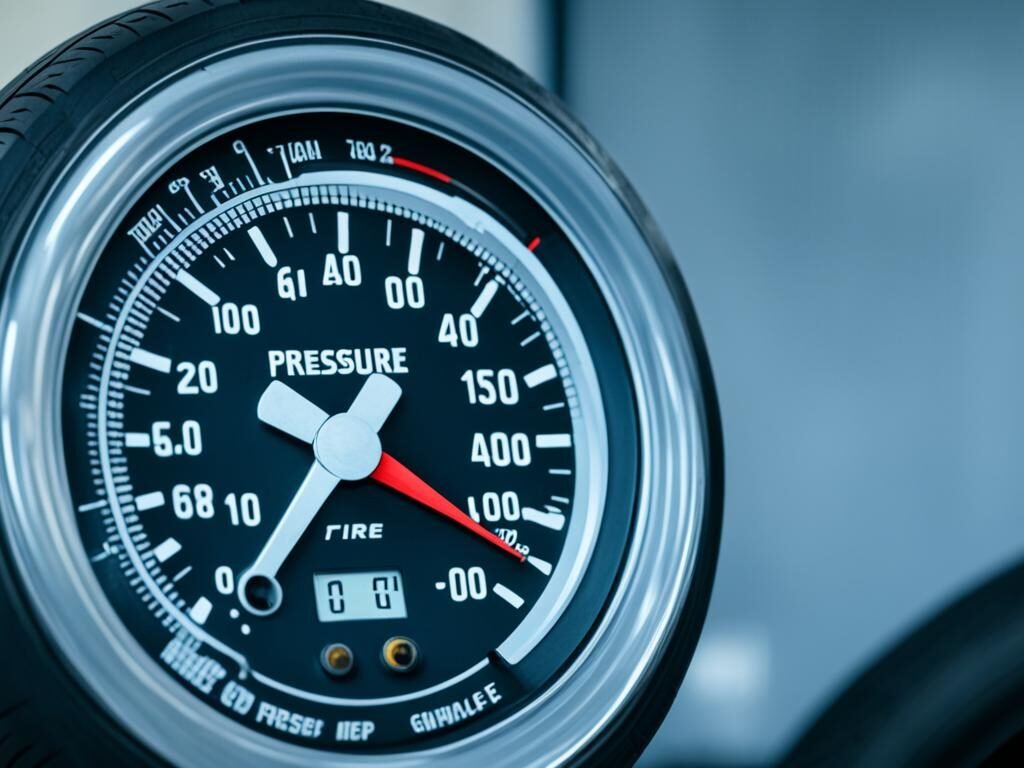
How to Properly Check Tire Pressure
Here’s what you need to do to check the tire pressure:
- Take off the valve cap
- Push a gauge onto the valve
- Check the reading
- Put in more air if needed, or let some out if there’s too much
Frequency of Tire Pressure Checks
Checking your tire pressure once a month is really important. Tires can lose a quarter of their air pressure every month. Doing this helps avoid driving with under-inflated tires. That’s good for saving gas and making your tires last longer.
| Tire Pressure Issue | Impact |
|---|---|
| Under-inflation | 12,000 mile decrease in tire lifespan |
| Improper inflation | 1 billion gallons of wasted gas annually |
| Under-inflation related incidents | 600+ fatalities, 33,000+ injuries yearly |
By checking and adjusting the tire pressure often, you help your car run better. This also saves gas and, most importantly, keeps your tires safe. So, don’t just rely on the tire pressure light to come on. Make this part of your regular car care routine.
Tire Rotation and Wheel Alignment
Tire rotation and wheel alignment are key to keeping your tires in good shape. Rotating your tires regularly helps them wear evenly. This makes them last longer. It’s best to rotate them every 5,000 to 8,000 miles or at oil changes.
Wheel alignment makes sure your tires sit right on the road. They should be straight side to side and front to back. This makes driving smoother, saves gas, and prevents uneven wear. If your car pulls to one side or the tires wear oddly, it might need alignment.
Let’s look at how to rotate tires:
- For front-wheel drive cars: Put front tires on the back. And, move the rear tires to the front.
- For rear-wheel drive cars: Change it up. Rear tires go to the front, while front tires move to the back.
- For four-wheel drive vehicles: Shift all tires in a criss-cross pattern, diagonally.
Special tires that must roll in a certain direction can only be moved from front to back on the same side. Also, remember to get a wheel alignment every two years. Or sooner if your car shows signs it needs it.
| Maintenance Task | Frequency | Benefits |
|---|---|---|
| Tire Rotation | Every 5,000-8,000 miles | Even wear, extended tire life |
| Wheel Alignment | Every 2 years or as needed | Improved handling, fuel efficiency |
Putting effort into tire rotation and alignment helps in many ways. Your car will run better, be safer, and use less fuel. Plus, you’ll avoid buying new tires too soon.
Monitoring Tire Tread and Wear Patterns
Watching tire tread and wear helps keep your vehicle safe and running well. By checking them often, you might find problems before they become big issues. This could save you money and prevent risky driving.
The Penny Test for Tread Depth
The penny test is a simple check for tread depth. Put a penny in the tread with Lincoln’s head down. If you see the top of his head, it’s time for new tires. Tires with 4/32″ of tread stopped quicker in tests. They stopped 122 feet sooner than tires with less tread. This can be life-saving in emergencies.
Understanding Tread Wear Indicators
Today’s tires have wear indicators to help you know when they are too worn. These are raised bars in the tread. When they are flush with the surface, the tire is too worn. US law mandates these indicators to make wear checks easier.
Identifying Uneven Wear Patterns
Unusual tire wear could point to problems with your car. Wear on the inside or outside often means your wheels are not correctly aligned. About 70% of such wear shows this issue. Worn-out centers indicate your tires might be over-inflated, finding in 60% of cases. Low inflation might cause outer edge wear in 50% of situations. Recognizing these wear signs early allows you to fix the main problem. This can make your tires last up to 25% longer.
